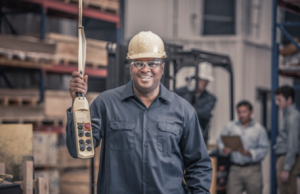(Akiit.com) There are many different paths a business can take when presented with an opportunity to expand. Perhaps you have a large amount of savings because your business had an amazingly profitable quarter, or maybe you’ve been given a large sum of money from investors who are eager to see what ideas you have for the future. Whatever the reason, you can never go wrong with a production line if you provide top-quality products to your consumers.
One of the most pressing matters for a growing business is being able to supply your customers with the products they want. Most manufacturing is outsourced to another company or a third party factory to handle. It’s often quite expensive to get your goods from their raw material state into your consumer’s hands and you might experience delays because most factories handle several jobs from different companies, but it’s necessary unless you want to build your own production line.
Owning your own factory used to be an extremely costly expense, but with the availability of cheap second-hand hardware and experienced engineers who are capable of repurposing machinery for your needs, it’s actually much cheaper than you would expect. If you’re interested in forming your own production line, then read on to find out how to take production into your own hands.
Obtaining a Factory
Perhaps the easiest way to get setup is to buy an industrial property. Either a pre-built one with all the necessary facilities that you need, or purchasing another business that currently operates a factory. If you manage to contact businesses that are similar to your own, then you might be able to strike a deal. Once you obtain all their assets, it’ll also include their factory which you can repurpose for your own needs. It’s a good idea to research and investigate the business you plan to buy before you spend a single penny. If the business is being sold, then chances are it’s going to come with a lot of baggage such as an unpopular product or frustrated employees.
The other option is to buy an empty factory or refurbish an existing one. There are many abandoned factories and large buildings that can be renovated to suit your exact needs. Whether you’re looking for a small building to house a short production line or a multi-floor structure capable of both manufacturing and research, then you’ll need to adjust your budget accordingly. Renovating abandoned factories might come with more hidden costs than you’d expect. For example, if there is structural damage that is beyond repair then you’ll have to demolish the site first. In other words, you’re not buying an abandoned factory to renovate. Instead, you’re buying a plot of land that needs to be worked on before you can build on top of it.
Equipping the Production Line
Your factory won’t be producing products out of thin air. Every piece of machinery in your production line needs to be perfectly tuned by experienced engineers. It’s worth hiring someone capable of managing the entire building process, someone that has knowledge in the field that you’re working in. There are two main ways to furnish your factory with the necessary equipment and machinery.
Firstly, you can buy it new. There are companies like Reliant Finishing Systems who specialise in specific pieces of machinery. It could be powder coating systems to add colour to your product, it might be mechanical arms to work on delicate circuits and parts, or even conveyor belts to move products around the factory. The exact machinery and electronics you need should be discussed with your foreman or whoever is in charge of putting the factory together, and they’ll usually have blueprints ready to show you before they begin buying new machinery.
The other option that your foreman might suggest is buying second-hand machinery. Factory equipment is highly specialised and expensive so it makes sense for a budget-conscious business to invest in used pieces. Many skilled engineers will have the ability to repurpose old hardware and refurbish them to a point that it looks and works like new. Don’t be put off by buying second-hand machinery. Factory equipment is designed to be sturdy and last a long time and the only reason they are sold in the first place is usually due to a factory being demolished or the production line being upgraded or made redundant, not because it stopped working or has faults.
Lastly, you’ll need to hire the right staff to work at your factory. You’ll have to teach them health and safety precautions, furnish the factory with the necessary emergency equipment and of course, teach them how to operate machinery. Most equipment can be operated with very little training and some delicate tasks will need to be done by hand instead of a machine. Consider how much it costs to hire an employee and work out how many you need at each stage of your production line. Don’t forget to count in costs for extra employees, and consider teaching some of your employees how to handle multiple different stations in your production line.
Logistics
Let’s not forget that you need to have a transport network that’s capable of ferrying your supplies to and from your warehouse, and you also need to create supply routes for your raw materials. Trucks can be expensive, but if you’re investing in a factory then hiring a couple of drivers and purchasing trucks is a small price to pay.
Keep in mind the location of your factory and warehouse. If they’re too far away, then you can expect to pay heavy costs in fuel and you might experience delays when it comes to meeting demands. If possible, move your warehouse to the factory itself so that there’s no need to transport finished goods to a separate location. This requires a fairly large factory, but you might be able to install a basement storage area or add extensions to the plot of land that your factory is in. The closer your office is to the factory, the more convenient it will be to keep an eye on things and manage your stocks.
Staff Writer; Harry Flood









Leave a Reply